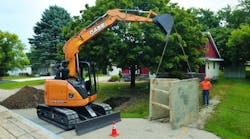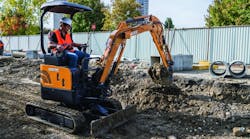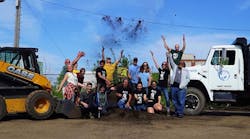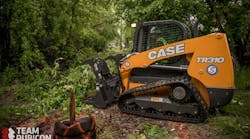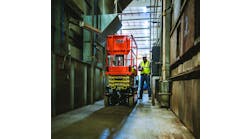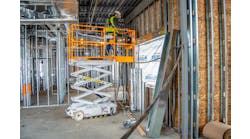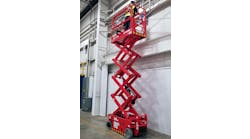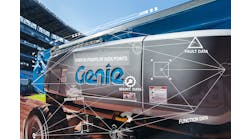As part of RER’s series of interviews with earthmoving manufacturers, David Garton, manager of rental accounts, Case Construction Equipment talks about economic forecasting in fleet planning, utilizing the benefits of telematics, how Tier 4 improved construction machinery and more.
RER: What are the latest technological developments with your equipment?
Garton: Some of the greatest advancements in our equipment have been in telematics and machine control technologies. From the rental standpoint, what we've been working on is getting the customers to use it. It’s one thing to have SiteWatch on all of your machines—and our rental customers could have 500 of our machines—but if they don't use it then it doesn’t do any good.
We're working with them to get the data that they need. Things like blade control with GPS on the dozers—they know it's there, but it’s being underutilized, so it's a matter of helping our dealers and end users understand what they already have available to them.
Other advancements have stemmed from the continuous improvement on the engines and the emissions through the Tier 4 mandate. Tier 4 has really made manufacturers take a closer look at how all the different systems—the engine, hydraulics, electrical systems etc.—work together in order to get the best performance out of a machine.
What trends do you see and do you expect to see in earthmoving equipment in the near future?
Garton: It’s important to have an understanding of the market mix. Most people think of rental as mini excavators, skid steers and other small equipment. I'll be honest, I think we've sold more heavy equipment this year that anything to the rental companies—full-size crawler excavators, large wheel loaders, dozers and things like that. It’s in response to the demands of the market.
That means contractors are starting to clear land, they're starting big projects and the smaller equipment is used to finish up those projects and once they're done, those smaller machines are used for landscaping, pools and things like that. In the future, I see both manufacturers and rental companies getting smarter about forecasting those needs based on different market conditions.
|
There was a lot of interesting technology at the Conexpo show, such as use of drone technology in earthmoving equipment, virtual reality training and more sophisticated use of telematics. What were some of the new technological advancements you have made? Garton: As far as technology in the rental industry, manufacturers have communicated what is available and now we're seeing the rental companies start to tell us what they really need, and how they use those advanced technologies. In regards to telematics, many rental companies are utilizing that data to help them stay on top of planned maintenance. Telematics data can help rental companies forecast, stock replacement parts ahead of time and stay ahead of the curve when it comes to properly servicing their equipment and maintaining profitability. That's where the rental companies are seeing what we can offer, and they want that kind of data loaded into their systems. |
Are you finding increased demand for any particular kinds of machines from the rental market?
Garton: The sales numbers in the rental industry are showing growth in demand for larger machines. You might look at that and say that it could be due to aging rental fleets needing replaced, but in the rental companies that I have talked to, that's certainly not the case. They need the gear. They need more and more excavators and dozers and other large earthmoving equipment in order to respond to the changing needs of the market.
What kind of knowledge of technology is necessary for rental companies to help their contractor customers?
|
Garton: One of the big challenges in the industry now is understanding the different Tier 4 solutions. As manufacturers, we know about all the different Tier 4 systems, and we know what you have to do to keep them running efficiently. A big part of my role at Case is going out and training the rental companies on these new technologies. This is what you need to know about Tier 4, this is how you keep it running. The big key though, is the end user. The guy that actually gets in the seat and has to fill up the gas—and DEF—tanks every day. If he doesn't know, it's not going to get done. The same with telematics systems that may be on the machine. We know it's there, some people at the rental company know it's there, so our challenge is to help them get that information to their end user. |
|
With telematics, you know what time the operator turned the key on, you know how much fuel he burned during the day, etc. The guy that's going to start to make an impact using telematics, from the rental standpoint, is the guy who can figure out how to effectively feed that data to their customers. If you can put on that invoice, automatically, this wheel loader ran X number of hours, burned X gallons of fuel, traveled X amount of distance and moved X amount of material—when you start feeding that productivity information to customers, that's when you start to win. That's when customers start to look at your rental company and say, "I don't get this from anybody else, what else can you tell me?" As far as technology moving forward, all the pieces are in place, now it's just about tying it all together and getting the rental companies to use it in a way that works for them, and getting them to feed that to the end users to help them manage their businesses better. |
How have machines improved (or not improved) with the advent of Tier 4 technology?
Garton: Machines have improved greatly with Tier 4 technologies. The environmental impact aside, what Tier 4 and this whole EPA emissions thing has made manufacturers do is really take a good hard look at how our machines operate. It used to be, you threw an engine in and you hooked it up and it ran. Well now, everything has to work in harmony. You have to maximize the output of the hydraulic pumps because maybe your engine isn't running at the higher horsepower that the previous model used to. You really have to take a look at the whole machine and make sure it runs extremely efficiently.
All the engines are computer controlled now, and I don't think you could tune and engine any better to be any more fuel-efficient. Then with Tier 4, all the stuff that we know we have to measure, again, the manufacturers had to look at their machines, look at their data and output and say, "We need to get better." I'm not sure that the industry has ever had to do that before.
We all remember seeing black smoke coming out of the exhaust pipes on some of these machines. Those days are gone, because we had to take a good hard look at the way our machines performed, and we realized that there's a better way to do this.
